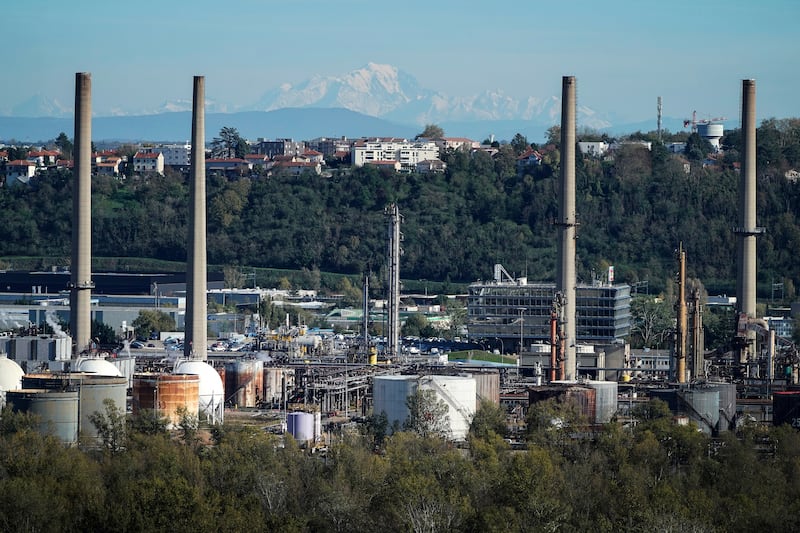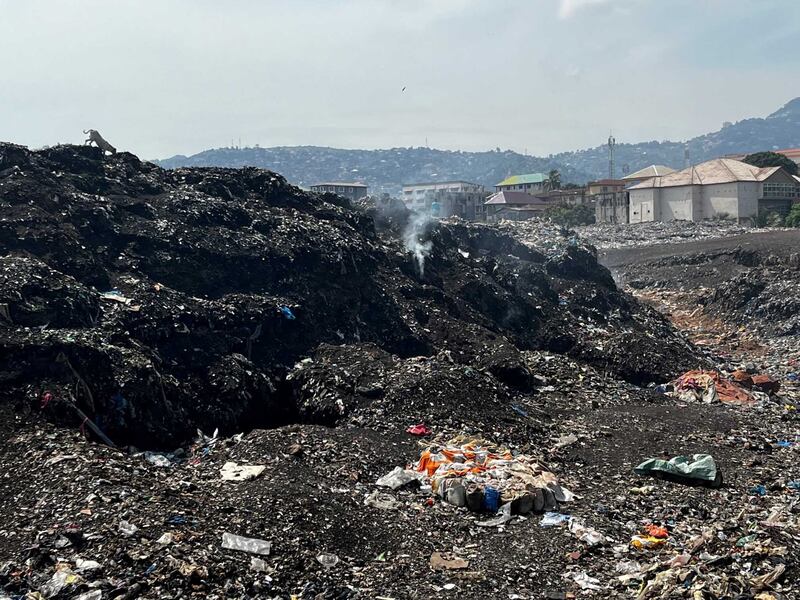Policies to boost renewable energy need to be coupled with investments to phase out fossil fuels, the executive director of Paris-based think tank Ren21 has said.
Russia's war in Ukraine has exacerbated a global energy crisis caused by years of underinvestment in new oil and gas projects.
Europe, worst-hit by the crisis, boosted its imports of liquefied natural gas to shield itself from potential shortages in the short term.
“The whole discussion about fossil fuel phase-out … we won't get there if countries continue to send very mixed signals [and] continue to invest in new oil and gas exploration even though this is clearly not possible if we take climate change seriously,” Rana Adib told The National in an interview.
“The other [challenge] is continued investment in fossil fuel subsidies,” Ms Adib said.
Meanwhile, renewable energy adoption has also gathered momentum, with many countries introducing policies and regulations to boost clean energy investment and speed-up use.

“We have seen positive effects because renewable energy has been identified as an affordable clean fuel, but also a fuel that is resilient to the energy price crisis and is actually more spread all over the world,” Ms Adib said.
The US Inflation Reduction Act, enacted last year, offers a series of tax incentives on wind, solar, hydroelectric power and other renewables, as well as a push towards electric vehicle ownership.
The REPowerEU Plan proposed by the European Commission seeks to increase the share of renewables in the EU’s energy mix to 45 per cent by 2030 – this is up from the bloc’s current target of 40 per cent.
“They are more comprehensive than the policy packages we have seen in the past. In Europe, for instance, they will not only look at the power sector, but also into the heating sector and into the fuel sector,” Ms Adib said.
“There is … also focus on building up manufacturing capacities, which is very clearly required.”
However, Europe’s pivot to oil and gas to address potential shortages is concerning, Ms Adib said.
“This focus on energy security has led to massive new investment in oil and gas exploration [and] infrastructure,” Ms Adib said.
“LNG terminals [have been] decided in super-speed processes, where you wonder why renewable permitting … cannot be addressed in a similar way.”
Global upstream investment in oil and gas is on course to reach $528 billion this year, its highest level since 2015, according to the International Energy Agency.
Meanwhile, global LNG trade hit a high of $450 billion in 2022 amid a surge in European demand, according to the agency.
Record imports of the supercooled fuel have helped bring down European natural gas prices to about €35 per megawatt hour, from a record high of about €345 in March 2022.
Short-term economic benefits and “strong lobbying” are behind Europe’s decision to invest in infrastructure to import more LNG, Ms Adib said.
“These infrastructure [projects] are not short term … we're speaking about 30 to 50 years, and this is a very short-sighted view,” she said.
“It's sending very wrong signals to the economic players.”
On Friday, UN Secretary General Antonio Guterres called for an accelerated agenda to drive a just transition for the global energy system to meet net zero goals and deadlines.
The UN leader said the fossil fuel industry was the vital player in the push to meet the Paris Agreement target of capping global warming at 1.5ºC above pre-industrial levels.
“We are hurtling towards disaster, eyes wide open”, he said. “It’s time to wake up and step up. The world must phase out fossil fuels in a just and equitable way."
Renewable power capacity is expected to increase by a third globally this year as growing policy momentum, higher fossil fuel prices and energy security concerns drive the adoption of solar and wind power, according to the IEA.
Hydrogen has been floated by energy companies as a potential solution to reduce emissions in hard-to-abate sectors such as steel, cement and petrochemicals.
“Whether it’s hydrogen or ammonia, it plays a role to complement solar [photovoltaic] as a storage function … hydrogen is a really interesting solution here,” Ms Adib said.
However, talk of using hydrogen as a key energy carrier in the place of electricity “does not make sense”, she said.
It “means that we need to build up three times more renewable power capacities … this is not efficient in terms of investment”.
Hydrogen, which can be produced from renewable energy and natural gas, comes in various forms, including blue, green and grey.
Blue and grey hydrogen are produced from natural gas while green is derived from splitting water molecules through electrolysis.
French investment bank Natixis estimates that investment in hydrogen will exceed $300 billion by 2030.













